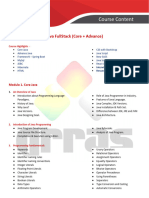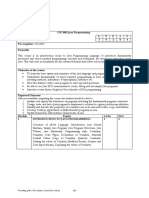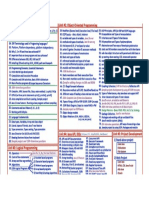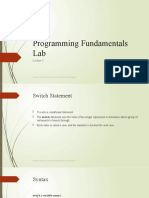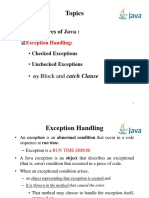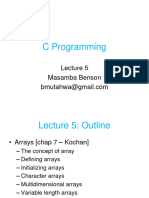0% found this document useful (0 votes)
4 views15 pagesJava Course
This document outlines a comprehensive course on Java, covering topics from basic syntax to advanced concepts like concurrency and networking. It includes practical exercises, a project to build a simple To-Do application, and an appendix with a cheatsheet. The course is designed for learners to gain hands-on experience with Java programming through examples and coding tasks.
Uploaded by
makhinkhincho2025Copyright
© © All Rights Reserved
We take content rights seriously. If you suspect this is your content, claim it here.
Available Formats
Download as PDF, TXT or read online on Scribd
0% found this document useful (0 votes)
4 views15 pagesJava Course
This document outlines a comprehensive course on Java, covering topics from basic syntax to advanced concepts like concurrency and networking. It includes practical exercises, a project to build a simple To-Do application, and an appendix with a cheatsheet. The course is designed for learners to gain hands-on experience with Java programming through examples and coding tasks.
Uploaded by
makhinkhincho2025Copyright
© © All Rights Reserved
We take content rights seriously. If you suspect this is your content, claim it here.
Available Formats
Download as PDF, TXT or read online on Scribd
/ 15






























